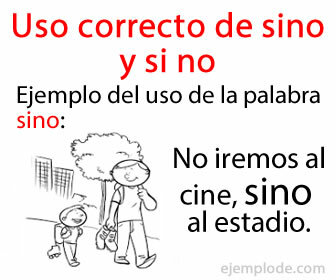Systems Features
Science / / July 04, 2021
The word system It has multiple definitions, but it can be summarized in two main ones:
1. A system is a set of elements that act together for the achievement of a purpose.
2. A system is the form of organization that have the contents on a topic or some science, for their study and understanding.
Systems features
The systems will be determined by a series of characteristics:
- Objective or purpose
- Properties
- They can be open or closed
- Synergy
- Stability
- Organization
1. Objective or purpose
Systems exist because they always have a reason for being, a goal to meet. All the elements that compose it act to pursue it. This happens naturally. For example, in the circulatory system of the human body, all blood vessels are responsible for carrying oxygenated blood to all cells. The blood, after delivering oxygen, picks up residual carbon dioxide from biochemical processes, and carries it to the lungs for disposal.
2. Properties
In the case of thermodynamic systems, for example, such as pots on the stove or pipes by those that a fluid is transported, these will have a series of properties, which are listed below continuation:
- Internal energy: it is the sum of all the molecular energies of the substance within the system.
- Hot: It is the thermal energy, produced by a variation of the agitation of the molecules, and that can either be transmitted to the outside or be transformed into work.
- Job: It is energy in the form of mechanical work, which some thermodynamic systems communicate to their environment or take from it.
- Temperature: It is the average kinetic energy of the molecules of the substance in the system.
- Volume: It is the three-dimensional space covered by the elements of the system.
- Pressure: It is the force per unit area that is exerted on the system.
- Flow or volumetric flow: If the system is open, like a pipe, it is the volume of fluid that passes through it, in each unit of time.
- Mass flow: If the system is open, like a pipe, it is the mass of the fluid that passes through it, in each unit of time.
3. They can be open or closed
Systems can be open or closed, according the contact they have with their environment. It is easier to understand these concepts if we refer to thermodynamic systems.
- Open systems: are those in which a matter and energy exchange with its surroundings. The energy can be in the form of heat or mechanical work. Some examples are pipes, pots, water tanks.
- Closed systems: They are those in which there cannot be a circulation of matter, but there can be a circulation of energy, such as heat and mechanical work. Some examples are the pistons of internal combustion engines.

4. Synergy
The synergy in systems refers to all its elements act to favor the objective be achieved. This would be in an ideal system. However, in reality it always happens that an element generates a disorder, so the achievement of the objective is hindered or delayed.
5. Stability
The stability it is the absence of difficulties or fluctuations in a system. This can be absolute or determined between margin conditions. For example, in industry, a bottled beverage production system can be said to be stable if it fills the 500mL bottles between 498mL and 502mL. If fill occurs below 497mL or above 503mL, adjustments will need to be made to the machine calibration, which is the factor that breaks stability.
6. Organization
The systems are characterized by having an internal organization. Each of its elements fulfills a specific function. In many cases, some elements are themselves subsystems, which collaborate with their part for the system to be functional.
Examples of systems
From its two meanings, a series of concepts are derived that are properly systems, and are present in everyday life:
- The human body
- The computers
- A nutritional regimen
- A socioeconomic structure
- The ecosystems
- Thermodynamic systems
- The education system
The body It is a set of elements aimed at staying alive and functioning in good health. It is, in turn, made up of a variety of systems, such as the circulatory system, the lymphatic system, the bone system, the muscular system. All of them are sets of elements (blood vessels, fluids, bones, muscle tissues, respectively) that work together to achieve the goal that the body functions properly.
The computers or computer systems are sets of electronic and computer elements that are dedicated to performing calculations and functions that would involve more time if they were done by hand and on paper. They use resources such as software and hardware, which are the non-tangible and tangible elements, respectively, and which can be so specific that they increase the efficiency of the tasks.
A nutritional regimen, also called a "weight loss system" or "system to increase muscle mass," for example, often includes a manual containing suitable recipes and illustrations of series of exercises to be performed. You can not miss the containers with auxiliary substances, which contain proteins, vitamins and substances such as L-carnitine. Together, these elements work for the person to lose weight or gain muscle mass.

A socioeconomic structure It is a set of elements that defines the development of a country. It describes the productivity of its inhabitants and the trajectory that the companies that settle in it are taking. It is finally left as a hierarchy in which the higher positions have the greatest prosperity economically, and minors are a moderately paid workforce, which sustains that prosperity.
The ecosystems they are the interaction of all the living and non-living elements of a natural environment. Food or trophic chains are present in it, which allow a circulation of chemical substances and a regeneration of life and the planet. Ecosystems are determined by the physical and meteorological phenomena that occur in it and by the flora and fauna that inhabit them.
The thermodynamic systems are all those sets of elements in which an exchange of matter, energy or both occurs. It can be a pipe through which a fluid circulates, a glass with water that is heated or cooled. Its properties are susceptible to being modified by environmental influences.
The education system It is the way, determined by a country, in which education is going to be imparted to young people, so that they acquire knowledge and develop skills that will help them face life labor. This system also assigns the schedules and contents, and manages the country's resources for this aspect.

